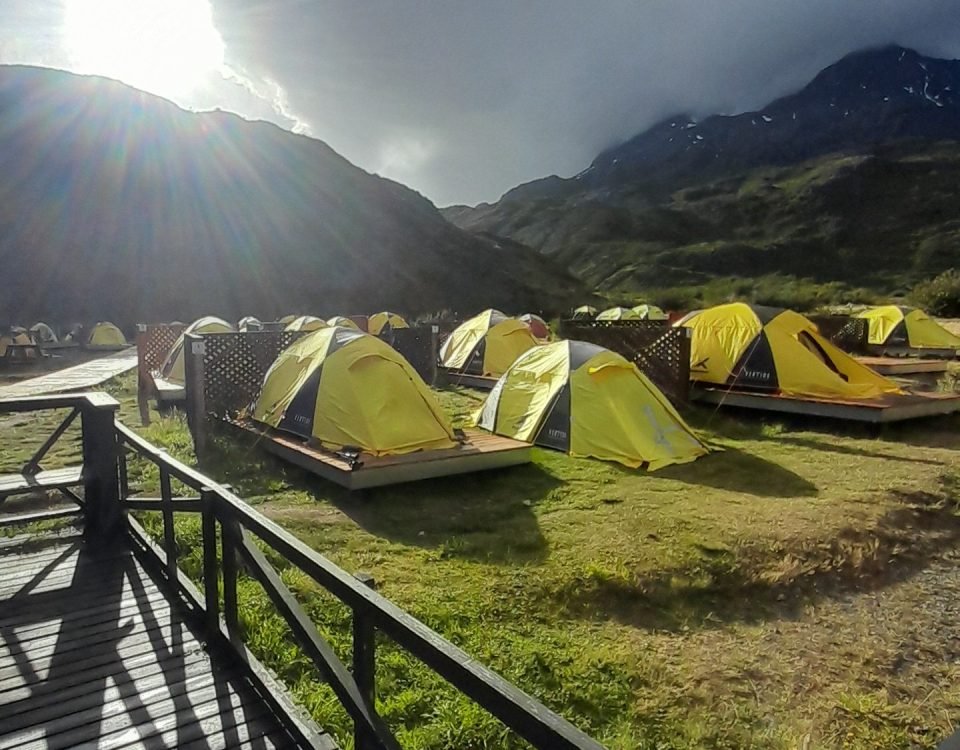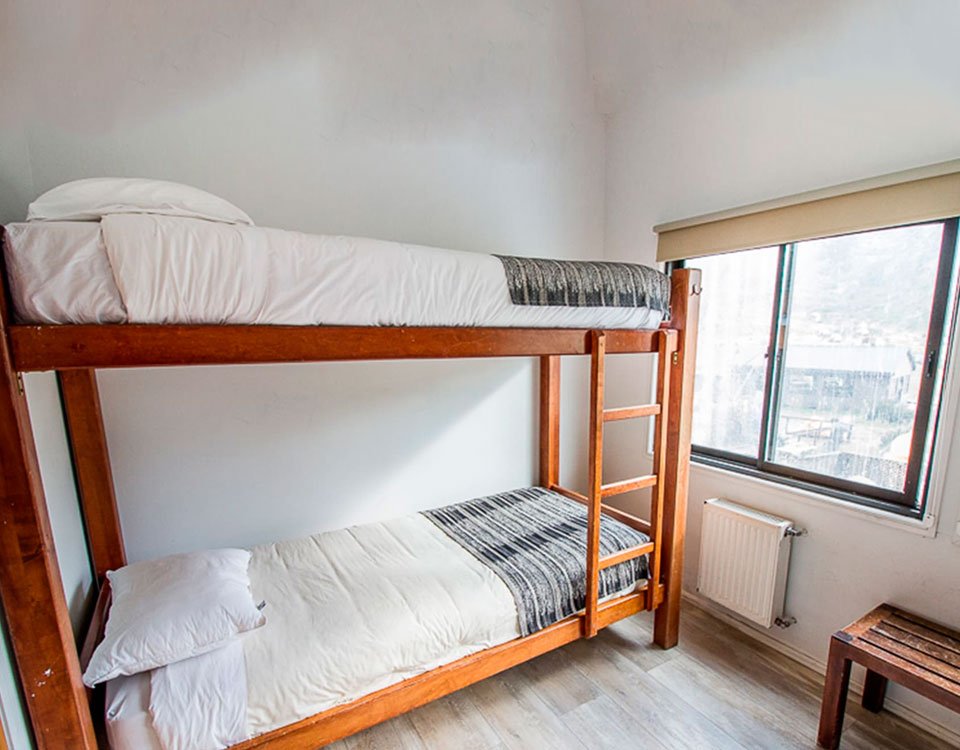W Trek – What to know before starting
I never imagined that I would be captivated by landscapes as imposing as the ones I discovered, when I had the opportunity to do the famous W Circuit in Torres del Paine. I would like to share with you a little bit of this incredible experience when, with a mixture of fear for the challenge and a huge enthusiasm to make the most of the adventure, I packed my backpack and headed to the south of Chile.

WHAT IS THE W CIRCUIT?
The W Circuit is a trekking experience within the Torres del Paine National Park, in Chilean Patagonia. This park, with more than 180,000 hectares protected, is one of the main destinations in Chile. Its majestic nature includes towering mountains, glaciers, turquoise lakes, and a unique diversity of flora and fauna.
There are different ways to visit Torres del Paine:
- Daily excursions from Puerto Natales, a nearby town two hours from the park, is the most common option.
- Staying in hotels within the park offers a more immersive experience, with spectacular views from breakfast. These hotels typically include transfers, meals, and excursions, making it a high-cost option.
- For the more adventurous, it is possible to take trekking circuits that run through different areas of the park, allowing you to get to know its main attractions while spending the night in refuges or camps.
The W Circuit, named for the shape it traces on the map, is completed in 4 or 5 days and covers 90 km. For those looking for a greater challenge, there is the O Circuit, a 120 km crossing in 7 or 8 days.
IS IT NECESSARY TO HAVE EXPERIENCE?
Even though I am not a person with much experience in trekking, I always had this trip on my to-do list, mainly because of the beauty of the landscapes that I knew would dazzle me. And although I did not have specific training, I can say that the adventure is totally feasible for those who are in good general physical condition.
TYPES OF ACCOMMODATION
One of the first decisions is whether to stay in shelters or camps. Both options are recommended, and in terms of cost, there isn’t a big difference. Camps allow you to access shelter facilities such as restaurants and shops and make friends no matter where they are staying, so the choice depends on personal preference.
The shelters are well-equipped, offer spaces to dry clothes, and have a Wi-Fi signal (in most cases, although you pay for the service). Personally, I appreciate the comfort of a mattress after long days of hiking, which ensures a restful night’s sleep. The electricity is cut off at midnight, and from 11 p.m. it is considered rest time, to avoid annoying noises. In the camps, on the other hand, the adventurous experience remains intact. The tents, depending on the sector of the park, will be traditional two-body or premium style raised a meter and a half from the floor and with a structure that gives it more space and comfort. In both cases they are installed on arrival and include a sleeping bag and pillow. Of course, don’t forget to bring a microfiber towel or rent one in each sector, regardless of the accommodation selected.
 PREPARATIONS FOR THE TREK
PREPARATIONS FOR THE TREK
Once you’ve decided on your accommodation, it’s time to focus on your luggage. It is advisable to leave part of it at the hotel in Puerto Natales and carry only the essentials in a backpack that you will carry from one point to another during the tour. A personal tip: wrap clothes and important objects in plastic bags, in case it rains and the backpack cover fails.
The weather in Patagonia is unpredictable. In a few days, you can go from hot to cold, from wind to rain, so it’s crucial to dress in layers. Don’t forget a good pair of sneakers or trekking boots, quick-drying clothes, a warm jacket, sunglasses, sunscreen and a good book or card game for the nights in the shelters.
FEEDING
Food is not something you need to worry about. The shelters provide abundant breakfasts and dinners, while for lunches they give you very complete meals, which include a sandwich, chocolates or cookies, fruits, nuts and a protein bar or sachet of minerals for the water. They also give you a refillable bottle that you can fill on the slopes and in the shelters.
Also, if you have special dietary needs, these can be reported at the time of booking, and shelters make sure to meet the requirements.






 PREPARATIONS FOR THE TREK
PREPARATIONS FOR THE TREK

